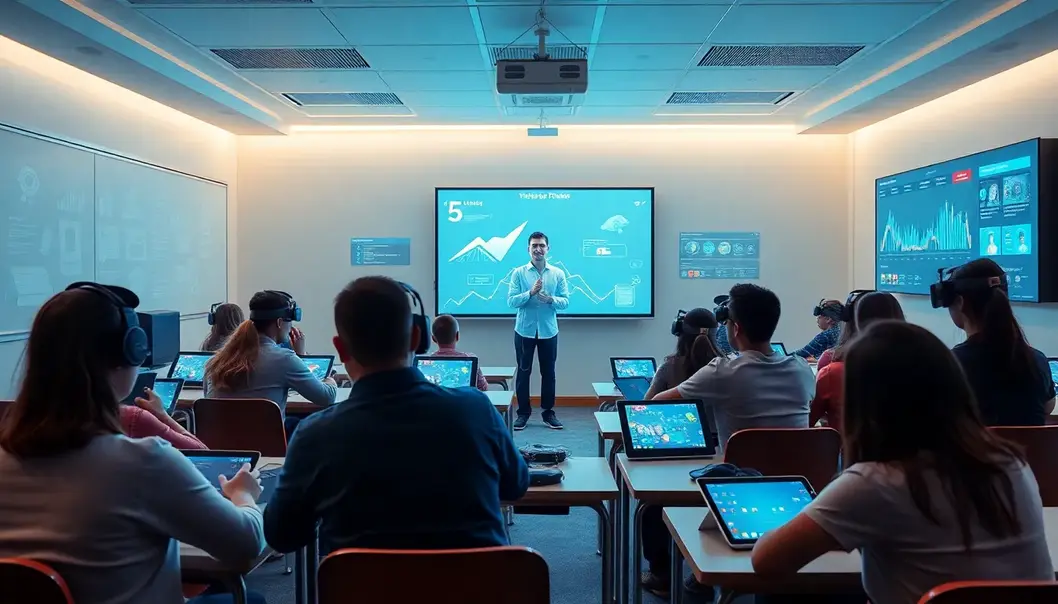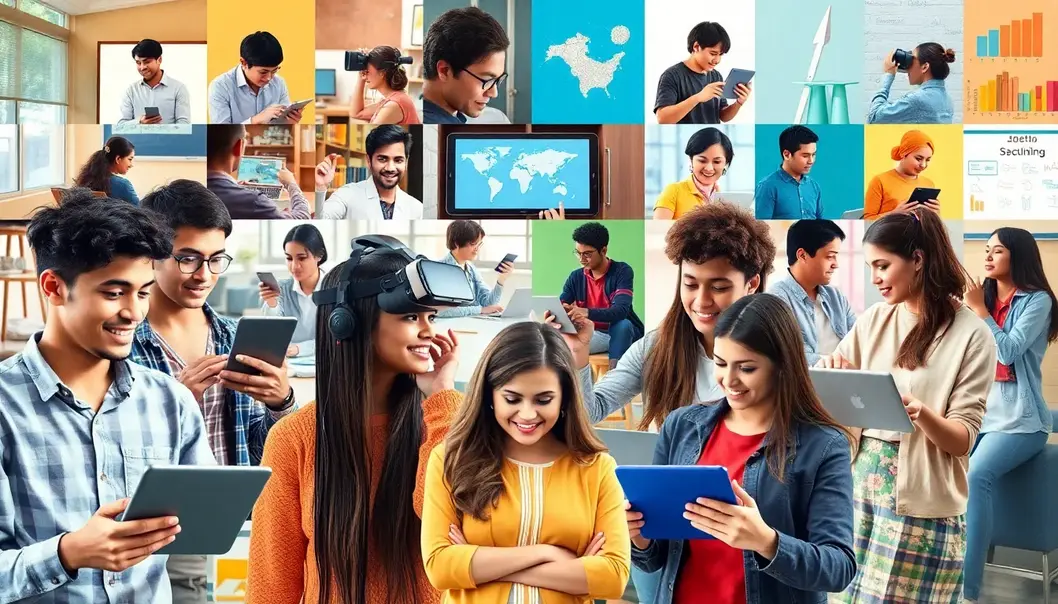As the boundaries of traditional classrooms expand, technology plays an essential role in reshaping modern education. No longer confined to textbooks and chalkboards, learning now thrives through digital platforms, innovative apps, and interactive experiences that cater to diverse learning styles. For young adults, accustomed to digital interactions, this shift not only resonates deeply but also opens up expansive opportunities for personalized and global learning. From virtual reality field trips and online courses to AI-driven tutoring, technology is not just a tool—it’s a gateway to a more engaged and accessible educational experience. Let’s dive into how tech is redefining education for the digital generation.
Digital Classrooms: Beyond the Brick Walls

The transformation of traditional classrooms into dynamic and interactive learning environments is revolutionizing the educational landscape for young adults. This shift is driven by digital technology, which offers unprecedented opportunities to break down barriers, both geographic and economic, in accessing education.
Online platforms are at the forefront of this transformation, providing students with the ability to attend classes from anywhere in the world. This global connectivity ensures that students in remote or underserved areas can access the same quality of education as their urban counterparts. The flexibility to engage with coursework and lectures according to individual schedules empowers students who might otherwise face challenges due to work or family commitments.
Virtual reality has further changed the educational environment by providing immersive learning experiences that transcend the limits of physical classrooms. Students can now explore historical sites, examine biological systems up close, or even simulate complex laboratory experiments without needing physical access to these resources. This technology not only enhances engagement but also deepens understanding by allowing learners to experience concepts firsthand rather than merely reading about them.
Another significant advantage of digital classrooms is personalization. Digital tools enable the tailoring of educational experiences to meet individual student needs, addressing diverse learning styles and rates of progress. Students can receive real-time feedback through interactive quizzes and assignments, allowing them to identify strengths and weaknesses and adjust their efforts accordingly.
For instance, a student interested in marine biology could explore coral reef ecosystems through virtual reality, while receiving personalized feedback and resources from online platforms to bolster their understanding. This approach aligns with future discussions on artificial intelligence in education, where the tailoring of educational experiences becomes even more sophisticated.
Moreover, digital classrooms foster a global classroom culture that encourages collaboration amongst students worldwide. Young adults gain exposure to multiple perspectives, enhancing their learning experiences and preparing them for a globally connected world. This environment not only facilitates collaboration but also encourages the sharing of diverse cultural insights, enriching the student experience.
By transforming brick-and-mortar institutions into adaptable and inclusive digital environments, technology is redefining what it means to gain an education. This ongoing evolution presents an exciting opportunity to make education accessible, equitable, and engaging for all young adults. As we move forward, the scope of digital classrooms continues to expand, creating a more connected and innovative learning landscape.
AI in Education: Personalized Learning Experiences

Artificial intelligence is at the forefront of reshaping education, providing unprecedented capabilities for personalizing learning experiences for young adults. As AI algorithms become more sophisticated, educational platforms harness these advancements to tailor lessons that align with individual pacing and learning styles. This tailoring begins with an in-depth analysis of students’ interactions, continuously identifying their strengths and weaknesses to adjust content accordingly.
Imagine a classroom where AI evaluates a student’s performance on mathematics problems, not just by marking answers right or wrong, but by understanding the thought process behind each attempt. Such platforms can dynamically alter the difficulty of tasks and suggest areas needing improvement, offering a roadmap to mastery uniquely suited to each learner.
AI tutors and chatbots further revolutionize the traditional teacher-student dynamic. These digital assistants provide instant feedback and support, ensuring that students receive timely and constructive guidance outside of typical classroom hours. Whether it’s helping with a complex chemistry equation or offering feedback on a historical analysis, AI chatbots mimic engaging, responsive interactions, enabling learning to be a continuous rather than episodic process.
Leading educational institutions are beginning to integrate AI-driven systems that assess more than just cognitive development. Emotional AI, for instance, monitors stress levels in students through facial recognition and voice analysis, adjusting workload and offering relaxation techniques where necessary. Such a holistic approach ensures a supportive learning environment that addresses both intellectual and emotional student needs.
One powerful example of AI’s impact on education is its implementation in language learning. AI-infused language platforms use natural language processing to offer real-time pronunciation feedback, helping learners refine their accent and improve fluency. These tools adapt to learners’ progress, introducing vocabulary and grammar exercises that challenge yet complement their current level.
The potential future applications of AI in education are vast and transformative. Machine learning algorithms can predict future educational trajectories, offering students bespoke career advice and highlighting potential academic paths before they even recognize these options themselves. By doing so, AI can help bridge the gap between education and real-world career demands, ensuring graduates are better prepared for professional success.
The transformative impact of AI in education not only enhances individual learning experiences but also redefines the very structure of educational systems. As we continue to explore and integrate these technologies, the learning landscape becomes more inclusive and adaptable, reflecting the diverse needs of students. For a broader overview of how educational paradigms are shifting due to technology, consider exploring insights found in related articles on this educational innovations overview.
Final words
Technology stands as a catalyst in redefining educational paradigms, offering young adults unprecedented opportunities for engaging and personalized learning. By embracing new tools and platforms, students can overcome traditional barriers, stepping into a future where education is more accessible, flexible, and tailored to their needs. As technology continues to evolve, so too will the possibilities for learning, promising a dynamic and inclusive educational experience for generations to come.
Ready to transform your learning experience? Explore cutting-edge educational technologies today!
Learn more: https://www.educationaltechportal.com
About us
Educational Tech Portal offers innovative solutions to enhance learning through technology. From AI-driven platforms to immersive virtual experiences, we provide resources and products designed to modernize education for today’s learners.

